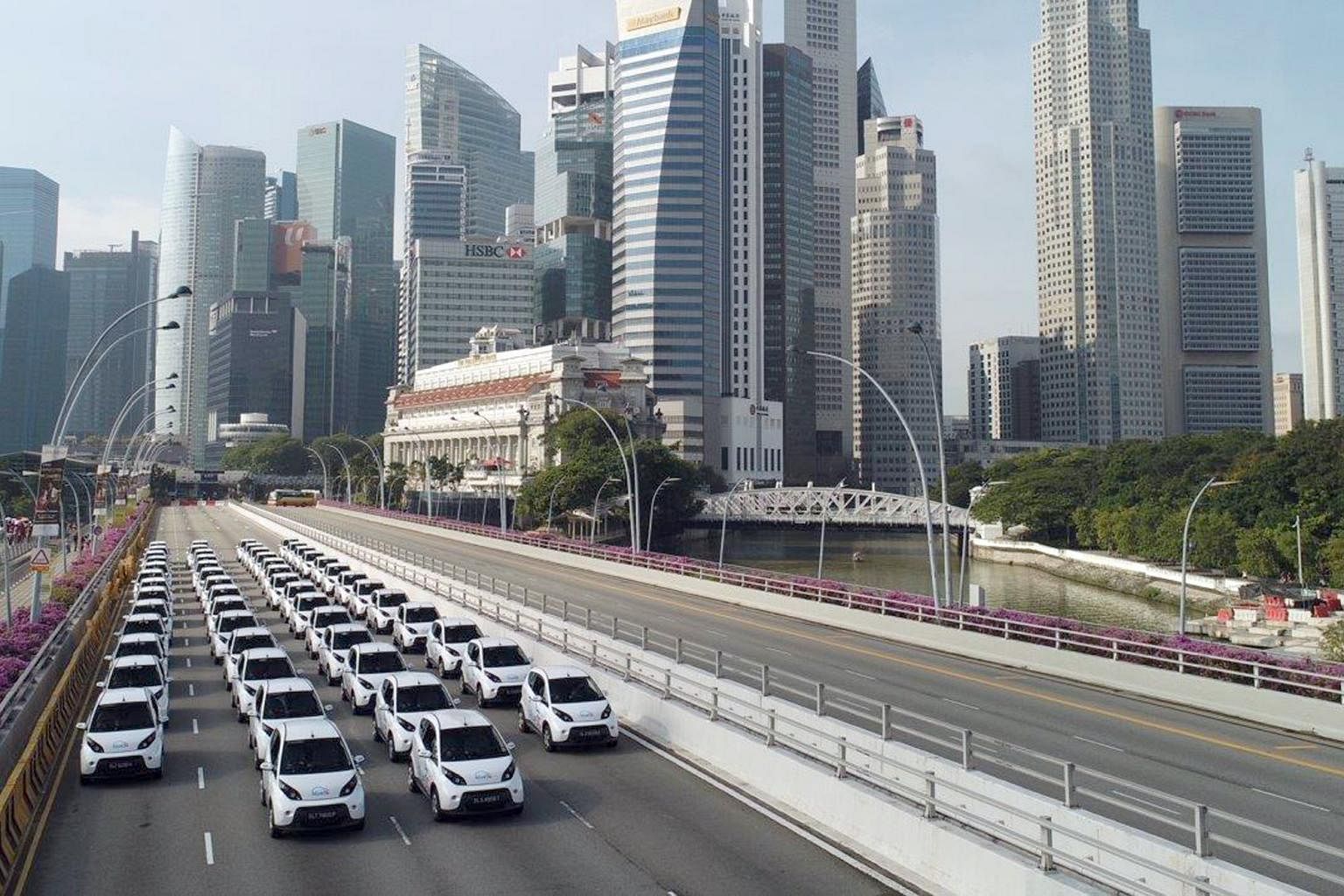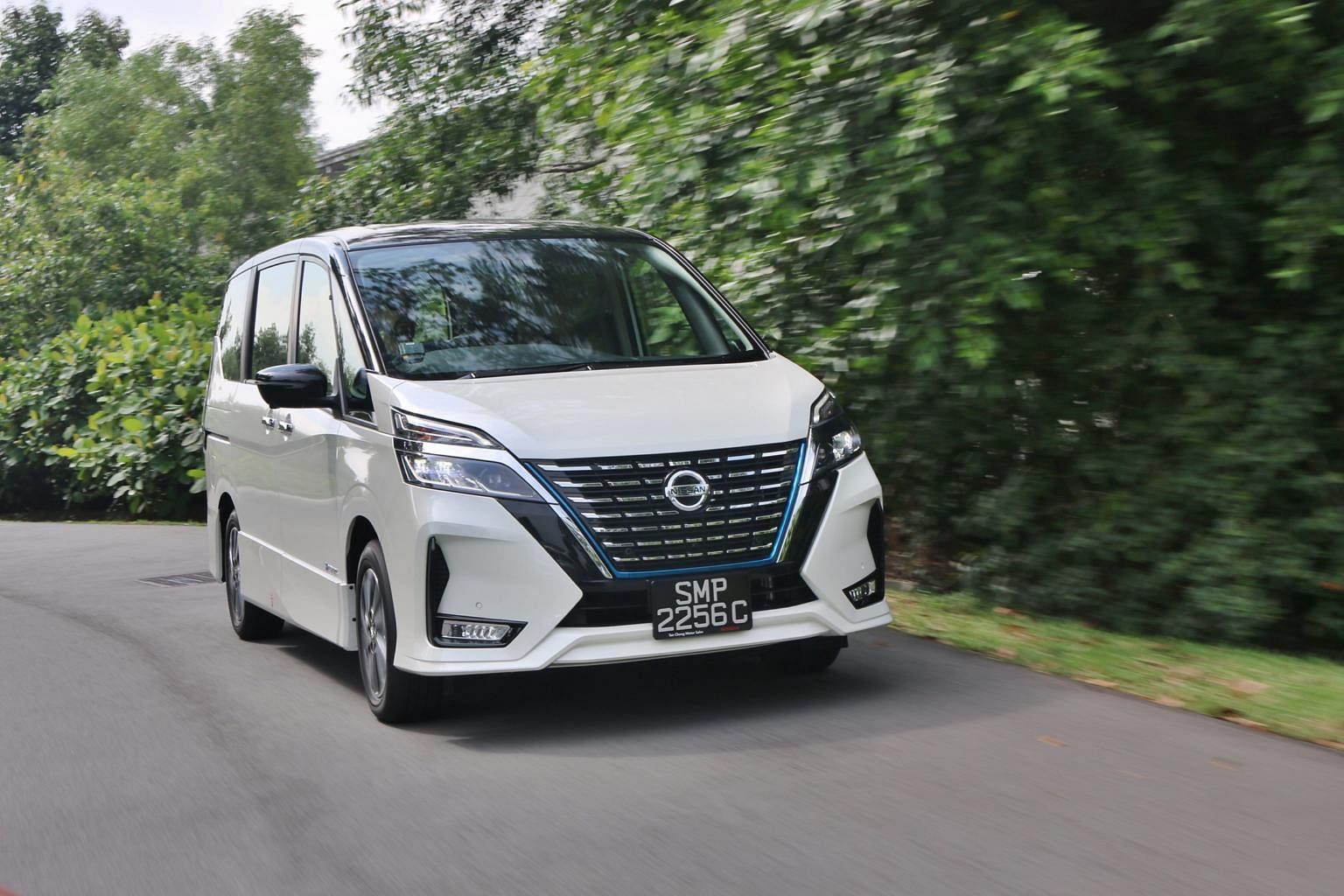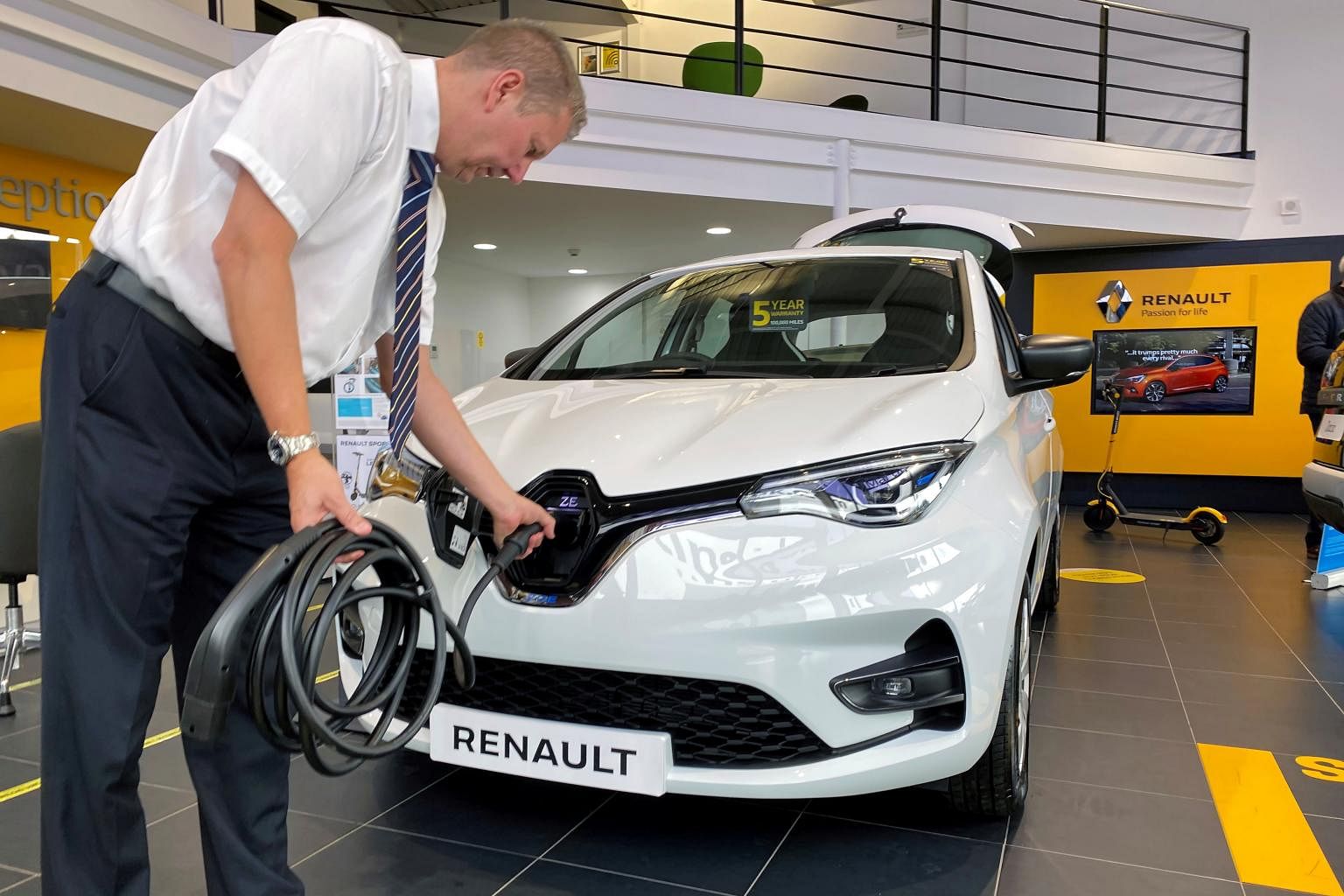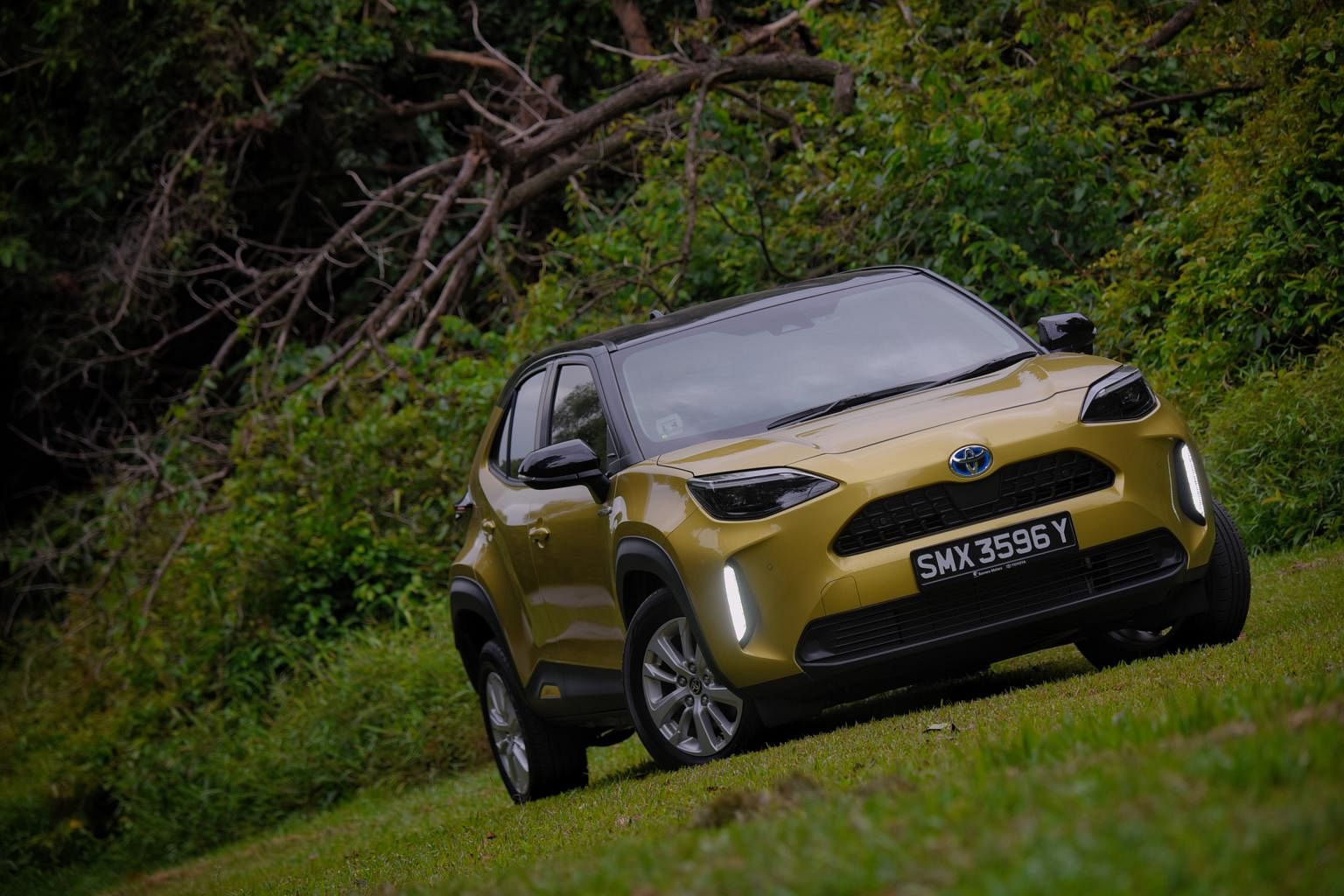Electrifying Drive: Electrified offerings to suit every motorist
Sign up now: Get ST's newsletters delivered to your inbox

Singapore hopes for all cars on the road to have some form of electrification by 2040.
PHOTO: BLUESG
Follow topic:
SINGAPORE - Vehicle electrification was introduced here more than 20 years ago when the petrol-electric hybrid Prius was launched by Toyota agent Borneo Motors.
Since then, a variety of electrified cars have arrived, including full electric vehicles (EVs) in the last few years.
With growing concerns over the environment, many countries are banning pure internal combustion engines (ICE). Singapore aims to do so, too. By 2030, it will ban registration of pure ICE cars. And by 2040, it hopes for all cars on the road to have some form of electrification.
Here is a guide to the different types of electrified vehicles you can buy.
Plug-In Hybrid Electric Vehicles (PHEVS)
Many hybrids from the European makes can be plugged into a wall socket for recharging, and have larger batteries and more powerful motors.
These plug-in HEVs (PHEVs) have reasonably long electric-only range, allowing for emission-free motoring for 40 to 100km. To enjoy this electric range, the PHEV has to be plugged in at least once every two days or so. Otherwise, it will rely primarily on its ICE for power.
Because of the bigger battery and larger motor, a PHEV in ICE mode is less efficient than some pure ICE cars.
Like regular HEVs, PHEVs will make use of both motor and engine when maximum acceleration is called for.
The main advantage of PHEVs is their usable electric range, which gets most people to and from work comfortably.
PHEVs are costly - sometimes almost as expensive as a full-electric car - and also likely to incur higher maintenance costs, since both the ICE and electric drivetrains need to be serviced. They are best viewed as EVs with a built-in insurance against range anxiety.
Brands offering PHEVs include BMW, Mercedes-Benz and Volvo.
E-Power
This is Nissan's version of a hybrid. Three models - Serena, Kicks and Note - are available now and Nissan aims to offer its entire range of hybrids by next year.
E-Power cars are propelled by an electric motor. A small petrol engine acting as a generator keeps a small battery constantly charged. The advantage of e-Power is that it offers drivers the sensation of EV driving, with instant torque and zero loss from gear changes.
From an efficiency point of view, e-Power will match some of the hybrids in town, but not quite those offered by market leader Toyota.

Mild Hybrids (MHEVS)
At the bottom end of the HEV hierarchy are the mild hybrids (MHEVs). The term is currently applied to any vehicle with an alternator that doubles as a starter motor. In some MHEVs, the motor does not even provide torque assistance to the ICE.
Often, a belt-driven integrated starter-generator provides a small amount of assistance to the ICE during acceleration and allows engine shut-off during coasting under light-load conditions.
A compact lithium-ion battery, ranging from 12 to 48 volts, is recharged when the car is braking or coasting.
The real-life fuel savings MHEVs provide may be negligible, but there are still some savings.
They also do not cost appreciably more than equivalent ICE models.
Battery Electric Vehicles (BEVS)
EVs which run on hydrogen fuel cells are not yet available here, but we have battery electric vehicles (BEVs). They are silent, swift and smoke-free - ideal for an urban set-up such as Singapore.
The first passenger BEVs arrived about 10 years ago, led by Renault and BMW. Back then, the BMW i3 tall hatch had a claimed range of 130km to 160km.
The current crop of BEVs will comfortably exceed 300km on a full charge. Some can breach 400km, making a trip to Kuala Lumpur feasible.
But they have to be plugged in at some point. How quickly full charge can be achieved depends on the size of the battery, power output of the charging station and power rating of the vehicle's on-board charger.
Singapore already has a half-decent distribution of public EV charging points across the island. They range from slow chargers, which will take more than 12 hours to juice up a high- performance BEV, to ultra-fast direct current chargers which can do the job in 30 minutes.
Singapore aims to have 60,000 charging points by 2030. If you live in a landed property, you can have a personal wall charger, which often comes with the BEV you buy. Once a week, plug your car in before you go to bed.

Renault, Mini, Jaguar, Porsche, MG, BYD, Hyundai, Kia and Lexus are some of the brands with BEVs in their showrooms today.
Being relatively new, BEVs come with some uncertainties, including the useful lifespan of their batteries and motors. Most manufacturers provide warranties. The Lexus UX300e comes with an eight-year or 200,000km warranty, which is the farthest for a BEV here and covers the battery as well.
Government tax incentives amounting to $45,000 are also in place to entice first movers, but are likely to dwindle once electric cars become mainstream.
Hybrid electric vehicles (HEVs)
Generally viewed as a stepping stone to full electrification, a hybrid electric vehicle (HEV) combines an ICE with one or more electric motors to drive one or both axles.
All HEVs have on-board electrical energy storage, with the current trend being a lithium-ion battery pack.
Even though the battery offers limited distance and speed, most HEVs can be driven in pure electric mode in light-load situations, such as in carparks and on small roads in residential estates.
Since these areas tend to be built-up and densely populated, zero emission will be much appreciated.
When operating together with the ICE, the HEV's motor provides a useful torque boost, particularly during mid-range acceleration and when moving off from rest.
The ICE helps keep the battery charged. The battery is also recharged when the vehicle is braking or coasting.
Besides the Prius, Toyota and its sister brand Lexus have hybrids across almost their entire model ranges.

Brands such as Hyundai, Kia and Honda offer hybrids too.
The main benefit of a hybrid is fuel efficiency.
The Toyota Yaris Cross, for instance, clocks 100km on just 3.8 litres of petrol.
While hybrids used to be 20 to 30 per cent pricier than pure ICE equivalents, the price gap is now narrower at 10 to 15 per cent.
For the average motorist, the petrol cost savings will eventually make up for this upfront premium.

